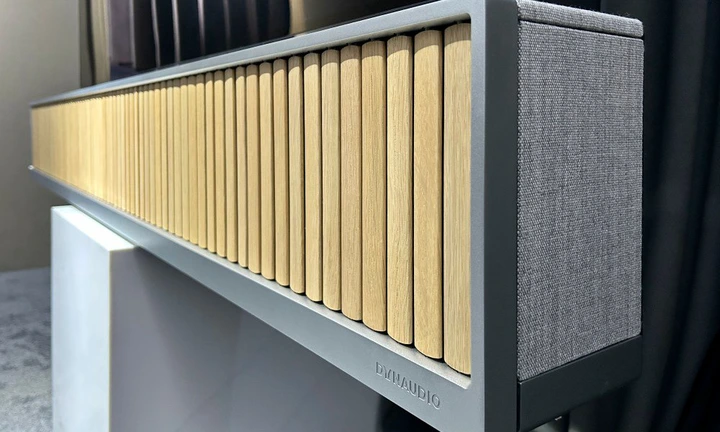
View pictures in App save up to 80% data.

View pictures in App save up to 80% data.
One of the best things about CES is seeing and hearing products that are still months or even years away from launch. This year, at CES 2025, I had a chance to listen to Dynaudio’s first soundbar, the Symphony Opus One. You can’t buy one yet, but the company expects the price to be around $20,000 when it’s ready — possibly later in 2025, but more likely in 2026.
That's quite a hefty price. However, similar to many other legendary audio products hailing from Dynaudio's home country of Denmark, you're investing as much in the design as you are in the sound quality.
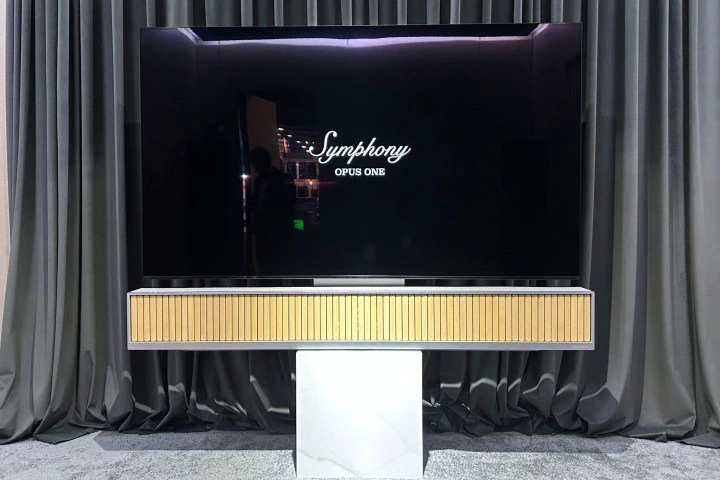
View pictures in App save up to 80% data.
The huge, 73-inch-wide, 1,500-watt speaker looks more like an air register from a super yacht than a soundbar, thanks to the aluminum chassis, fabric panels, and a series of 72 oscillating wooden fins that make up its front face. Perhaps not coincidentally, they remind me of the vertical wooden slats used by the legendary Danish design team at Bang & Olufsen on its Beolab 8, Beolab 28, and Beosound Theatre.
They’re individually carved from a species of Japanese oak. Unlike B&O’s fins, though — which supposedly play a role in directing sound — Dynaudio’s slats are mostly cosmetic.
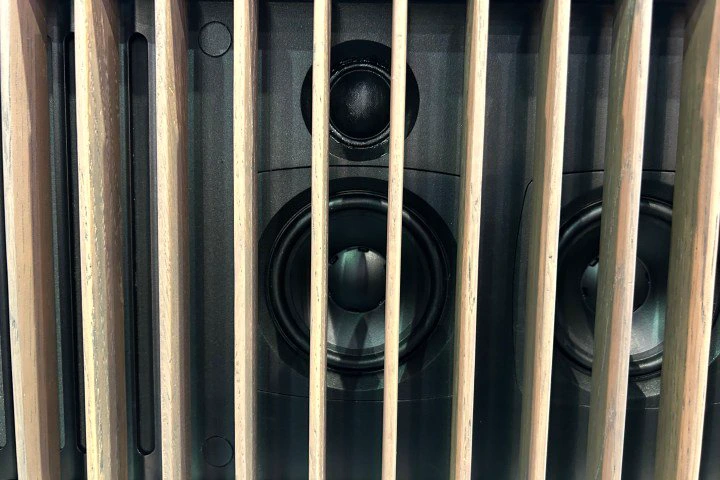
View pictures in App save up to 80% data.
Rather than concealing the Opus One's impressive 24-driver setup behind a fabric grille like most speaker manufacturers, Dynaudio has chosen to incorporate louvered fins into the design. These fins remain closed when the soundbar is powered off and rotate 45 degrees to reveal the drivers when in operation. At the time of its release, consumers can expect to see two primary fin designs along with various fabric color options.
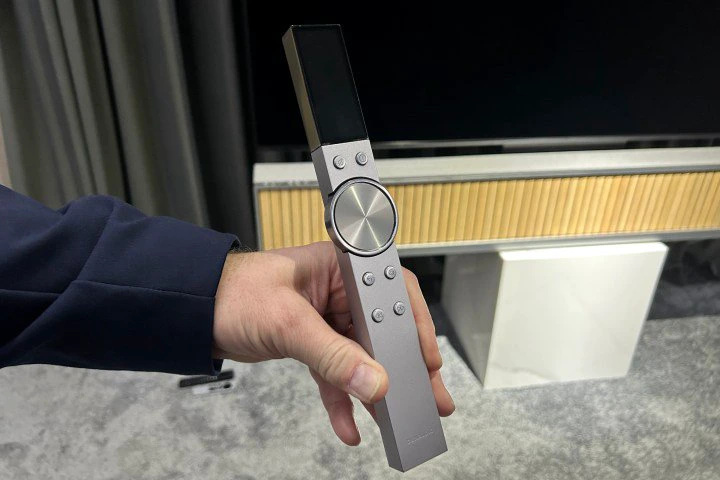
View pictures in App save up to 80% data.
The Opus One comes with a sleek, baton-like aluminum remote control that feels surprisingly substantial in your hand, reminiscent of a lightsaber handle. Its design features a large volume dial that turns with a satisfying resistance typical of premium amplifiers. If you're someone who can't resist gripping the remote while enjoying your favorite shows, this one is sure to keep your attention.
To access this content, please make sure that Javascript is enabled in your browser settings.
The marble pedestal featured in the accompanying images isn't part of the Opus One package, but according to Dynaudio, it will be available as an optional accessory.
The Symphony Opus One is currently in the process of refining its platform (the company has yet to finalize the range of inputs or the integration of streaming music services, for example), but Dynaudio was assured enough about the sound quality to showcase the speaker to attendees at CES.
Our demo included a section of Lady Gaga’s Close To You, and a scene from Mission: Impossible – Fallout — the one where Tom Cruise commandeers a helicopter and then struggles to keep it from becoming part of the landscape.
What I experienced was an impressive, accurate, full-range audio that offers exceptional clarity for both music and dialogue, along with a robust cinematic low-end impact. Like any soundbar, a dedicated subwoofer is necessary if you're aiming to rattle the very structure of your home, but the Symphony Opus One excels at enveloping you in its captivating and immersive audio experience, featuring reflected height channel effects and surround sound enhancements.
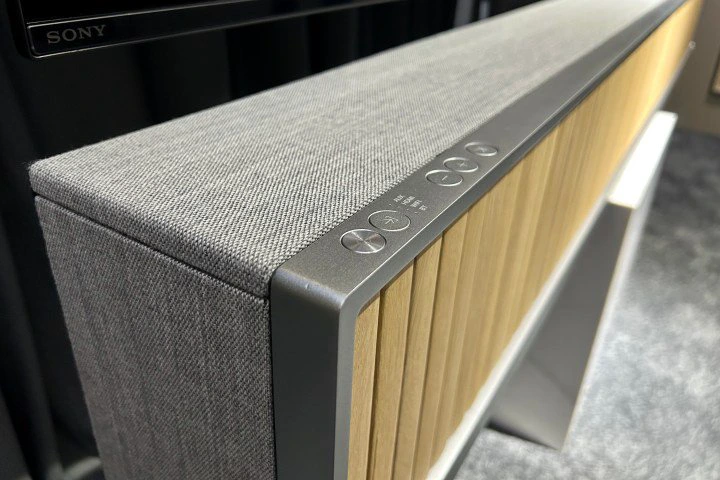
View pictures in App save up to 80% data.
The demo also included something I’ve never heard before — on any home theater soundbar. Dynaudio calls it “deep dive” mode, and it can direct sound toward the listener’s position such that they’d swear they’re listening to a private set of 5.1-channel speakers, floating around their head at a distance of a few feet. The feature was demo’d via Lavern’s Hold Me, and it was nothing short of amazing.
The effect is achieved through beamforming methods that utilize the multiple tweeters and mid-bass drivers in the Opus One, along with a standard HRTF profile. HRTF, or head-related transfer function, refers to a calculation that estimates how the shape and position of your head influence the timing of sounds reaching each ear.
Normally, HRTFs are used when companies want to reproduce spatial audio via headphones: It’s the best way we have of simulating a full complement of home theater speakers from a two-channel left/right set of headphones. We have an in-depth look at the art and science of binaural rendering if you’re curious about how it works.

View pictures in App save up to 80% data.
So the use of HRTFs in a speaker — even one with the considerable surround sound chops of the Symphony Opus One — is unusual. Unusual, but not unique. Audioscenic’s Amphi Hi-D technology (which I also heard while at CES) produces a very similar effect through products like the Razer Leviathan V2 Pro and Dell Plus 32 4K QD-OLED monitor. The difference is that those are near-field speaker arrays designed to work over distances measured in inches. In my demo, the Opus One did it at a distance of 8-10 feet.
Even more impressive was the level of control. I sat in the middle of three seats in the first of two rows. Behind me was a second row of two seats. As the demo progressed, the Opus One selectively targeted each seat with a deep dive soundscape. People in non-targeted seats could still hear the audio, but only the person in the deep dive seat got the magical, immersive experience. Each location needs to be calibrated using the remote, and a spokesperson told me that these “positions” may be stored for later recall.
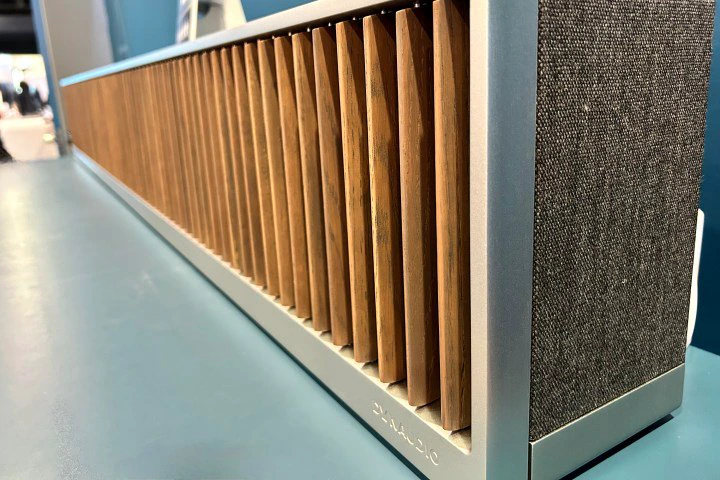
View pictures in App save up to 80% data.
Currently, the deep dive feature feels more like a show-off than a necessity, as it can only focus on a single listening spot at any given moment. It seems that Dynaudio is still exploring the various possibilities. Additionally, during the brief 15- to 20-second deep dive sample, I was too caught up in my initial excitement to fully process it. Would I prefer to experience an entire film in this manner rather than the traditional surround sound? I'm uncertain. Nonetheless, it was an amazing experience to hear.
Dynaudio claims that the impressive 73-inch width of the Symphony Opus One contributes significantly to its ability to cater to various listening positions through its deep-dive mode. However, I can easily envision the brand offering a more affordable, narrower variant that focuses on a single, centered deep-dive spot.
Defending the price of the Symphony Opus One based solely on my observations and experiences at CES is a challenge. However, let's set aside the financial aspect for the time being. What truly excites me is the emergence of a fresh contender in the soundbar market, particularly one with a prestigious hi-fi background like Dynaudio. It's even more thrilling to witness this brand experimenting with innovative concepts such as deep dive.
Determining if the end result justifies the investment is a question for the future, but I sincerely hope we can find an answer sooner rather than later.